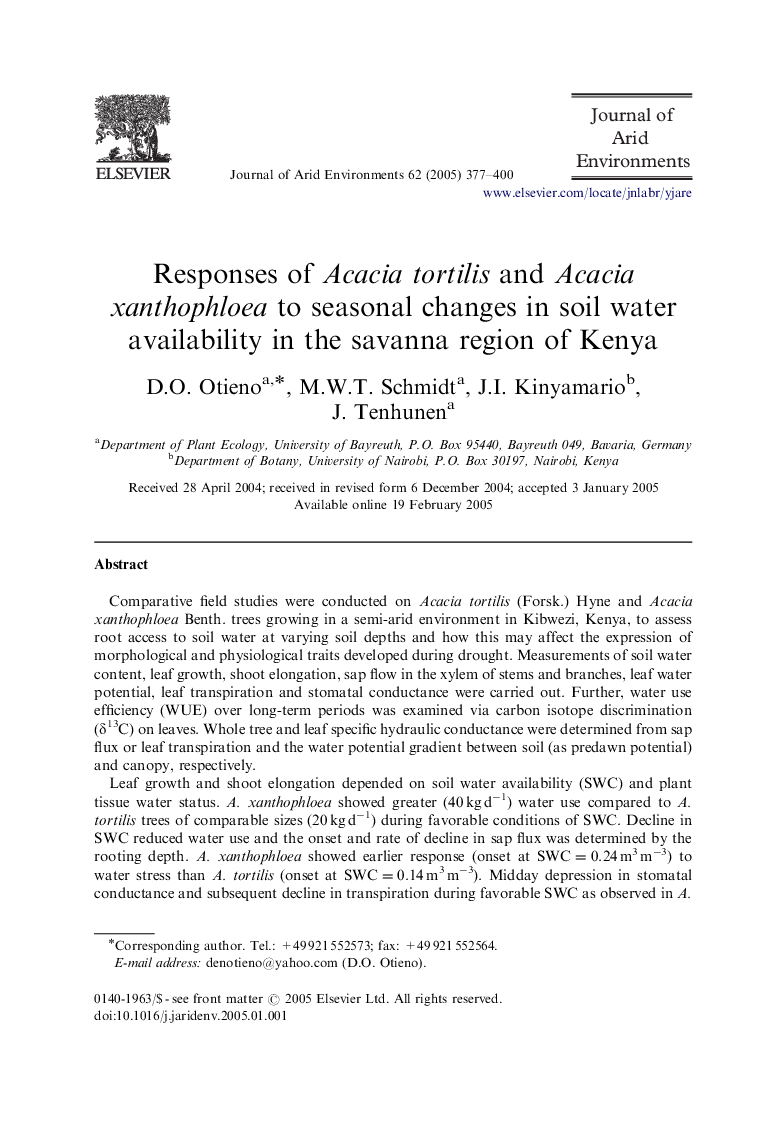| Article ID | Journal | Published Year | Pages | File Type |
|---|---|---|---|---|
| 9447816 | Journal of Arid Environments | 2005 | 24 Pages |
Abstract
Leaf growth and shoot elongation depended on soil water availability (SWC) and plant tissue water status. A. xanthophloea showed greater (40 kg dâ1) water use compared to A. tortilis trees of comparable sizes (20 kg dâ1) during favorable conditions of SWC. Decline in SWC reduced water use and the onset and rate of decline in sap flux was determined by the rooting depth. A. xanthophloea showed earlier response (onset at SWC=0.24 m3 mâ3) to water stress than A. tortilis (onset at SWC=0.14 m3 mâ3). Midday depression in stomatal conductance and subsequent decline in transpiration during favorable SWC as observed in A. xanthophloea was attributed to increased hydraulic resistance and stomatal closure. Rooting patterns and root characteristics could account for the observed morphological and physiological differences between A. tortilis and A. xanthophloea as well as between small and large A. tortilis trees. However, seasonal responses were modified by species-inherent characteristics, which are expressed during drought. Access to deeper soil water resources and the abilities of trees to extract and efficiently transport water may explain differences in drought resistance among species and tree distribution in the arid savanna.
Related Topics
Physical Sciences and Engineering
Earth and Planetary Sciences
Earth-Surface Processes
Authors
D.O. Otieno, M.W.T. Schmidt, J.I. Kinyamario, J. Tenhunen,
